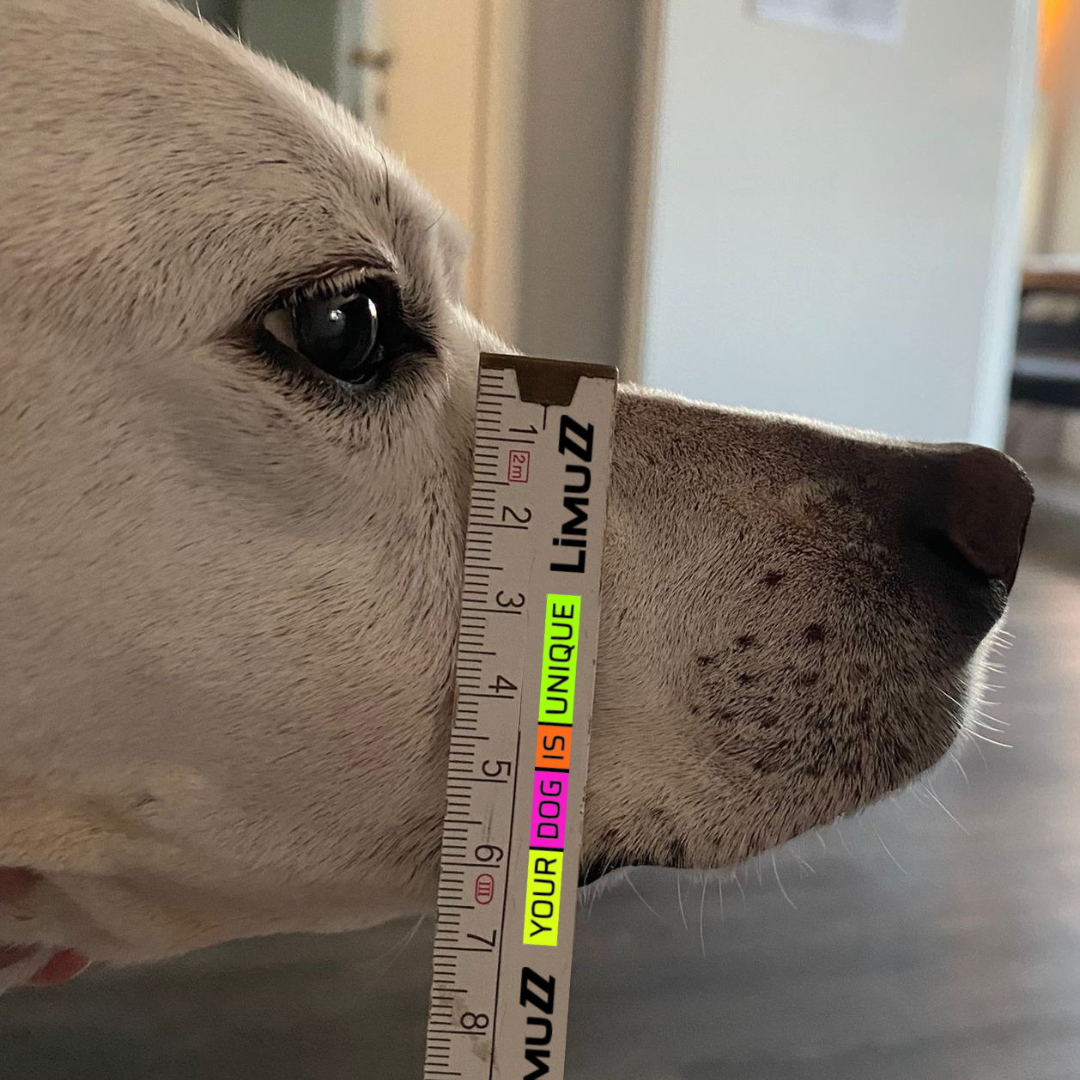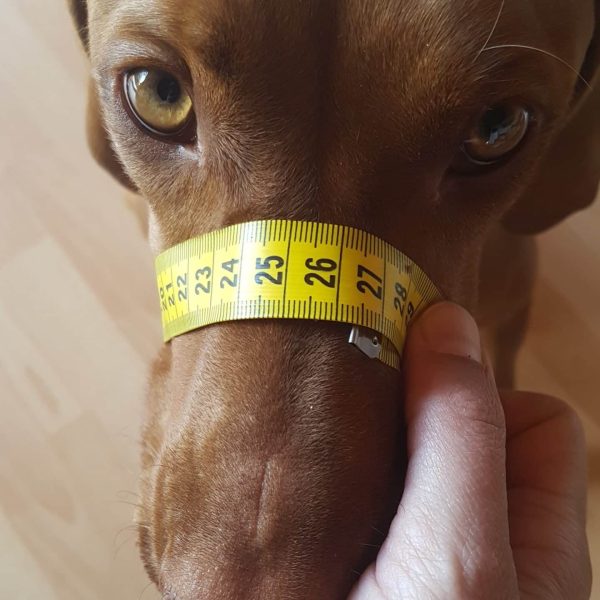How to measure a muzzle correctly
// Measure correctly and follow manufacturer's measuring instructions
When looking for a suitable muzzle for your dog and measuring the muzzle, there are a few important points to bear in mind – we have summarized them for you in this blog post to ensure that nothing goes wrong.
Different measurements are required in the measuring instructions of the manufacturers of muzzles. Length, width, circumference – you can get confused. Most of the time you are also asked to measure the dog with closed muzzle. But what is the best way to measure so that the muzzle really fits perfectly?
Length of the muzzle
The length should usually be measured from the tip of the nose to the stop. But what is actually the so-called stop? The stop, when applied to humans, is the root of the nose, the point where the frontal bone joins the nose. This is not so easy with some dog breeds. Here it is recommended to measure from the tip of the nose to the imaginary line between the eyes.

Width of the muzzle
The width of the dog’s nose is relatively easy to measure. You can use a ruler or a taut measuring tape to measure the width of the muzzle directly in front of your eyes, as this area is usually the widest. Place the measuring instrument carefully at this point and make sure that it is not too tight or too loose in order to obtain accurate measurement results.

Scope of the muzzle
When it comes to scope, there are different approaches depending on the manufacturer. Most often, the dog owner is required to count additions to the measurement result. This means that you indicate a little more than the dog actually has when the muzzle is closed. However, this carries the risk that it may be somewhat inaccurate after all. It may be that the muzzle does not fit with too much or too little information.

Too big, too small – what to do?
Now what if I misjudge or my dog doesn’t fit in the standard muzzle? It varies from manufacturer to manufacturer how to measure to order a muzzle. With models that are made in different one-size-fits-all, you then often have a choice between a little too small and a little too big. Too small is extremely uncomfortable for your dog because the muzzle squeezes and your dog can’t pant enough. Too big is annoying for you because the dog can slip the muzzle off relatively easily and you can never be sure whether the muzzle will hold when the dog needs it.
Are there also manufacturers who do things differently?
Yes! We at Limuzz for example, need the following three values when measuring.
- Length: It is best to measure exactly as indicated above. Limuzz recommends using a ruler for the length and also for the height.
- Height: Height is measured at Limuzz at the height of the stop with the catch closed.
- Circumference: It is best to take a normal tape measure and measure the circumference of the dog’s nose also at the level of the stop. Here too, Limuzz measures with the muzzle closed, which means you don’t have to worry about how much you might have to add so that the muzzle really fits afterwards.
Due to the innovative production process of Limuzz (the muzzles come from the 3D printer), it is possible to get a perfectly fitting muzzle for your dog. Limuzz muzzles are digitally prepared and then produced individually for your dog. Thus, the muzzle sits perfectly on the dog’s nose and can not or very difficult to be stripped from the dog. The measurements provided allow the muzzle to be anatomically correctly fitted to your dog and your faithful companion can always pant and have a lightweight, sturdy muzzle to keep you and your dog protected.
